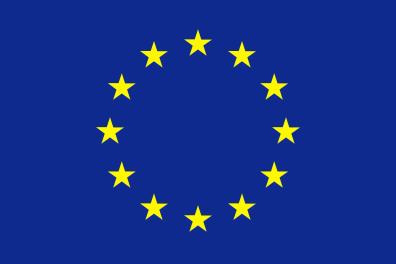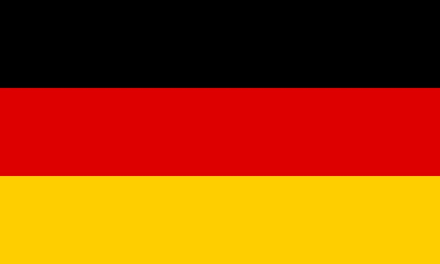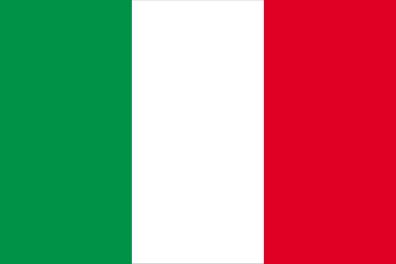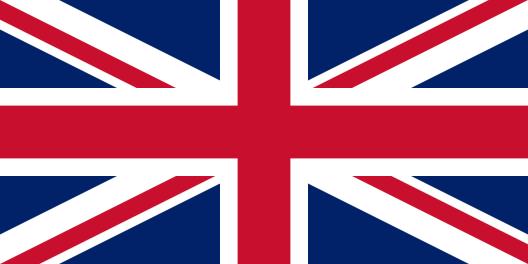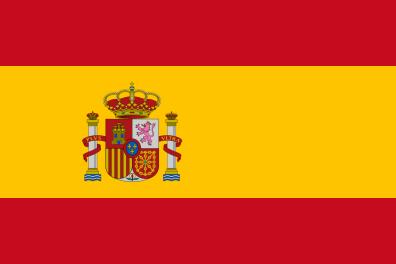Donate to Support Supercluster
Your support makes the Astronaut Database and Launch Tracker possible, and keeps all Supercluster content free.
SUPPORTSupercluster on Patreon
Your support makes the Astronaut Database and Launch Tracker possible, and keeps all Supercluster content free.
SUPPORTThis goes
to space
Euclid Telescope
Euclid is designed to explore the evolution of the dark Universe. It will make a 3D-map of the Universe (with time as the third dimension) by observing billions of galaxies out to 10 billion light-years, across more than a third of the sky.
While dark energy accelerates the expansion of the Universe and dark matter governs the growth of cosmic structures, scientists remain unsure about what dark energy and dark matter actually are. By observing the Universe evolving over the past 10 billion years, Euclid will reveal how it has expanded and how structure has formed over cosmic history – and from this, astronomers can infer the properties of dark energy, dark matter and gravity, to reveal more about their precise nature.
The Euclid spacecraft is approximately 4.7 m (15.4 ft) tall and 3.7 m (12 ft) in diameter. It consists of two major components: the service module and the payload module.
The payload module comprises a 1.2-m-diameter telescope and two scientific instruments: a visible-wavelength camera (the VISible instrument, VIS) and a near-infrared camera/spectrometer (the Near-Infrared Spectrometer and Photometer, NISP). The service module contains the satellite systems: electric power generation and distribution, attitude control, data processing electronics, propulsion, telecommand and telemetry, and thermal control.
Euclid will launch on a SpaceX Falcon 9 launch vehicle from Cape Canaveral, Florida, USA. Its operational orbit will be halo around a point known as the Sun-Earth Lagrange point 2 (L2), at an average distance of 1.5 million km beyond Earth’s orbit. This special location keeps pace with Earth as we orbit the Sun (and also hosts ESA’s Gaia and Webb space telescopes).
Nominal mission lifetime is six years, with the possibility of extension (limited by the amount of cold gas used for propulsion).
Euclid is a fully European mission, built and operated by ESA, with contributions from NASA. The Euclid Consortium – consisting of more than 2000 scientists from 300 institutes in 13 European countries, the US, Canada and Japan – provided the scientific instruments and scientific data analysis. ESA selected Thales Alenia Space as prime contractor for the construction of the satellite and its Service Module, with Airbus Defence and Space chosen to develop the Payload Module, including the telescope. NASA provided the near-infrared detectors of the NISP instrument.
Euclid will take images in optical and near-infrared light; these images will eventually cover more than one-third of the extragalactic sky outside the Milky Way, and depict billions of cosmic targets out to a distance where light has taken up to 10 billion years to reach us.
Euclid’s image quality will be at least four times sharper than that achieved by ground-based sky surveys.
In addition, Euclid will perform near-infrared spectroscopy of hundreds of millions of galaxies and stars over the same sky. This will allow scientists to investigate the chemical and kinematical properties of many targets in detail.
Euclid will build up a large archive of unique data, unprecedented by volume for a space-based mission, enabling research over all disciplines in astronomy.
Euclid’s mass in orbit will be 2 tonnes (including 800 kg of payload module, an 850 kg service module, 40 kg of balancing mass and 210 kg of propellant).
Caption courtesy of ESA

On this
rocket
Falcon 9 (Block 5)
Falcon 9 is a reusable, two-stage rocket designed and manufactured by SpaceX for the reliable and safe transport of people and payloads into Earth orbit and beyond.
Falcon 9 is the world’s first orbital-class reusable rocket.
Stats
Completed missions: 502
Total landings: 457
Total reflights: 426
The Falcon 9 has launched 67 humans into orbit since May 2020
Specs
Height: 70 m / 229.6 ft
Diameter: 3.7 m / 12 ft
Mass: 549,054 kg / 1,207,920 lb
Payload to Low Earth Orbit (LEO): 22,800 kg / 50,265 lb
Payload to Geostationary Transfer Orbit (GTO): 8,300 kg / 18,300 lb
Payload to Mars: 4,020 kg / 8,860 lb
On January 24, 2021, Falcon 9 launched the first ride-share mission to Sun Synchronous Orbit. It was delivering a record-setting 143 satellites to space. And while this was an important mission for SpaceX in itself, it was also the moment Falcon 9 overtook United Launch Alliance’s Atlas V for the total number of consecutive successful launches.
SpaceX’s Falcon 9 had become America’s workhorse rocket, launching 31 times in 2021. It has already beaten that record this year, launching almost an average of once a week. While most of the launches deliver Starlink satellites to orbit, the company is still launching the most commercial payloads to orbit, too.
Falcon 9 is a medium-lift launch vehicle, with the capability to launch over 22.8 metric tonnes to low earth orbit. Unlike any other rocket, its first stage lands back on Earth after separating from its second stage. In part, this allows SpaceX to offer the cheapest option for most customers with payloads that need to reach orbit.
Under its ride-share program, a kilogram can be placed in a sun-synchronous orbit for a mere 1.1 million dollars, far cheaper than all other currently operating small satellite launch vehicles.
The reusability and fast booster turnaround times have made Falcon 9 the preferred choice for private companies and government agencies. This has allowed SpaceX to capture a huge portion of the launch market.
Photo courtesy of Jenny Hautmann for Supercluster.

From this
launch site
SLC-40 - Cape Canaveral Space Force Station, Florida
Space Launch Complex 40 (SLC-40) is one of two launch sites leased by SpaceX at Cape Canaveral Space Force Station (CCSFS) in Florida, specifically designed for preparing and launching Falcon 9 rockets. Constructed in the early 1960s, SLC-40 was initially used for 55 Titan III and Titan IV rocket launches, including the Cassini-Huygens mission to Saturn. The pad was active from June 18, 1965, to April 30, 2005.
SpaceX began leasing SLC-40 in 2007, converting it to support Falcon 9 rockets. The pad was first upgraded to accommodate the original version of Falcon 9 and later received another upgrade in 2013 to handle the larger, reusable Falcon 9 rocket. On September 1, 2016, an explosion during a Falcon 9 fueling test caused severe damage to the pad. It was rebuilt rapidly, with construction completed in just 10 months, from mid-February to late November 2017. SLC-40 resumed operations with the successful launch of a Dragon capsule to the International Space Station on December 15, 2017.
After adding a crew access arm to the launch tower, SpaceX launched their first crewed mission from SLC-40 on Saturday, September 28th 2024 for NASA's Crew-9 mission to the International Space Station.
Under SpaceX’s management, SLC-40 has been the site of numerous significant missions. Notable launches include the first all-commercial Dragon mission to the International Space Station, NASA’s DSCOVR mission, the Transiting Exoplanet Survey Satellite (TESS) for NASA and MIT, the first satellite for Turkmenistan, the classified Zuma mission for Northrop Grumman and the U.S. government, the first GPS-III satellite, and the Beresheet lunar lander for Israel. Additionally, in September 2024, SLC-40 will host its first crewed launch with SpaceX’s Crew-9 mission, marking a new milestone for the pad.
Cape Canaveral is a major launch site with four currently active launch pads for Atlas V, Delta IV Heavy, Falcon 9, and Minotaur rockets. Located on Florida’s east coast, it offers extensive access to space for a variety of missions, including those targeting the Space Station, Geostationary Earth Orbit, the Moon, interplanetary destinations, and polar trajectories. The site’s location ensures that launches occur over the open Atlantic Ocean, minimizing risks to populated areas.
Cape Canaveral is often confused with or referred to alongside NASA’s Kennedy Space Center on Merritt Island. While they are separate installations, both play pivotal roles in the U.S. space program. Cape Canaveral has a storied history of significant space missions, including the launch of the first U.S. Earth satellite, Explorer 1, in 1958; the first U.S. astronaut, Alan Shepard, in 1961; the first U.S. astronaut in orbit, John Glenn, in 1962; the launch of the first two-person U.S. spacecraft, Gemini 3, in 1965; and the first U.S. uncrewed lunar landing mission, Surveyor 1, in 1966.
SLC-40 and Cape Canaveral continue to be integral to SpaceX’s ambitious launch schedule and the broader U.S. space program, supporting a wide range of missions and contributing to advancements in space exploration.
Photo courtesy of Jenny Hautmann for Supercluster

Booster lands
here
A Shortfall of Gravitas
A Shortfall of Gravitas" (ASOG) is one of SpaceX’s Autonomous Spaceport Drone Ships, designed to recover Falcon 9 rocket boosters at sea. Operating primarily in the Atlantic Ocean from Port Canaveral, Florida, ASOG joined SpaceX’s fleet in 2021. It plays a crucial role in SpaceX's reusability program, enabling the recovery and refurbishment of rocket boosters for future missions.
The name "A Shortfall of Gravitas" is inspired by science fiction author Iain M. Banks' Culture series, known for its playful and philosophical ship names. ASOG is fully autonomous, capable of sailing to its designated landing area and maintaining position without the need for a tugboat. Equipped with advanced thrusters, it ensures precise positioning even in challenging weather conditions and features a large landing platform for booster recovery.
ASOG is essential for missions requiring high velocities or distant orbits where landing on solid ground is not feasible. By recovering boosters at sea, ASOG helps SpaceX reduce costs and enhance the sustainability of spaceflight.
Photo courtesy to Jenny Hautmann for Supercluster

Here's where to view Euclid Telescope
Viewing Sites
- Alan Shepard Park
- A. Max Brewer Bridge
- Apollo Saturn V Center / Banana Creek
- Cherie Down Park
- Cocoa Beach Pier
- Jetty Park
- Kennedy Space Center Visitor Complex
- LC-39 Observation Gantry
- Lori Wilson Park
- Playalinda Beach
- Rotary Riverfront Park
- Sand Point Park
- Sidney Fischer Park
- Spaceview Park
Know Before You Go
SLC-40 was built in the early 1960s and hosted its first launch on June 18, 1965. Since then, it has launched nearly 100 missions on the Titan III, Titan IV, and Falcon 9 rockets.
During the Titan rocket era, SLC-40 was used to launch two interplanetary missions: Mars Observer to Mars and Cassini-Huygens to Saturn.
With the Falcon 9, the pad became the first Cape Canaveral site to host a launch to the International Space Station.
The pad is located on historic Cape Canaveral Air Force Station, FL - the primary launch center for the United States.
The Florida launch site handles the vast majority of U.S. launches every year and has been the starting point of numerous history-making missions for the United States, including:
- First U.S. Earth satellite in 1958
- First U.S. astronaut in 1961
- First U.S. astronaut in orbit in 1962
- First two-person U.S. spacecraft 1965
- First three-person U.S. spacecraft in 1968
GET THE SUPERCLUSTER APP
THE SUPERCLUSTER PODCAST
A podcast exploring the amazing milestones that changed space history, the wildest ideas that drive our future, and every development in this new Golden Age of Space.
Donate to support
Your support makes the Astronaut Database and Launch Tracker possible, and keeps all Supercluster content free.
SupportCOPYRIGHT 2021 SUPERCLUSTER LLC

